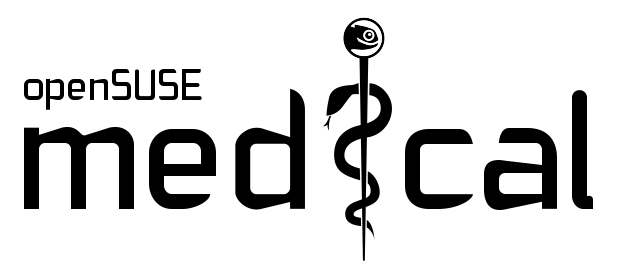New Leadership inside the Medical Project
9. Jun 2011 | Sascha Manns | No License
During the first openSUSE Conference in 2009, the idea was born to start a project to package and publish software for medical purposes. Since then, many packages were built and updated: software from the FreeMedForms project, OpenEMR, GnuMed, software for viewing images in DICOMM format and recently, a plasmoid for diabetics.

The first stable release (v 0.0.6) was released on November 2010, based on openSUSE 11.3 and as contestant in the “The Disters“-Contest. This release was produced with SUSE Studio, and published via SUSE Gallery.
The goal of this openSUSE derivative was to give medical people all they need in their daily work. So the image contained OpenOffice, KMyMoney, mail, calendering and all other basic office tools. And of course the content from the medical repository. There was some press attention in Linux Weekly News andLinuxtoday!
Provided software
openSUSE Medical provides tools from the FreeMedForms Project. FreeMedForms is a Electronic Medical Record Application. There doctors can manage clients data and diagnostic information. The second Application from this Project is FreeDiams, a electronic prescriber. And FreeICD helps to find the right ICD Code.

The GNUmed project builds free, libre open source Electronic Medical Record software in multiple languages to assist and improve longitudinal care (specifically in ambulatory settings, i.e. multi-professional practices and clinics). It is made available at no charge and is capable of running on GNU/Linux, Windows and Mac OS X. It is developed by a handful of medical doctors and programmers from all over the world. It can be useful to anyone documenting the health of patients including, but not limited to, doctors, physical therapists, occupational therapists, acupuncturists, nurses and psychologists.
TEMPO is open source software for 3D visualization of brain electrical activity. TEMPO accepts EEG file in standard EDF format and creates animated sequence of topographic maps. Topographic maps are generated over a 3D head model and the user is able to navigate around the head and examine maps from different points of view. Most mapping parameters are adjustable through the graphical user interface. Also, individual topographic maps could be saved in PNG format for future examination or publishing.

The software from the Oyranos Project is also part of the medical repository and in openSUSE Medical. It allows medical professionals to view medical file formats like DICOMM Files.
The newest addition to the medical repository is plasmoid-glucose, a KDE Plasmoid for diabetics.
The openSUSE medical project has been a success. The SUSE gallery image has been downloaded well over 1400 times and was cloned by 162 users so they could provide their own variations of openSUSE Medical!
The team is very much interested in more feedback, however. Especially when it comes to real-life usage of openSUSE Medical. Feedback from professionals in the field using the software can be very valuable in improving it and would be highly appreciated. So if you study medicine, work at a pharmacy or are a doctor and you use or might use openSUSE Medical, please let us know! You could tell the whole team by subscribing to the openSUSE Medical mailing list which is very low-trafic (3-4 mails per week) or contact one of the team members like Sascha Manns directly. Of course you are also very much welcome on the openSUSE Medical IRC channel and can join the facebook page!
New leadership and project plans
Today, the team announces a shift in leadership and a road map for the future.
Two years after the start of this project, the former team leader Sascha Manns has stepped down and Athanasios Ilias Rousinopoulos will take over. Last November, the first official release was published with a range of desktop and server packages. openSUSE medical is now part of the Linux Medical Taskforce and has exciting plans for the future. These include:
-
Importing more applications dealing with diabetes care and diabetics
-
Importing applications that would be useful for medical students (some educational applications like Kalzium are already added)
-
Bug testing applications (maybe create a new mailing list for this purpose e.g “opensuse-medical-bugs”)
-
Translating the included applications into more languages
The new leader Athanasios-Ilias yesterday has released the new image under susegallery. Also available at : OVF image, VMware Image, Live CD/DVD.
More information and helping out
Anyone interested in the project can read more about it at the Medical wiki portal.
There are many ways to help with working in the project - you don’t need to be a developer or packager, nor do you need to be a medical specialist, though of course these skill sets are very welcome. If you’re not sure how to help, sign up to the mailing list and introduce yourself. If you’re a user of this software and would like to see it develop in certain directions, this is also a great place to get your ideas heard.
If you want to get involved, subscribe to the mailing list with “opensuse-medical+subscribe@opensuse.org”. We very much welcome your feedback!
Have a lot of fun :-)
Contributed by Sascha Manns, Athanasios Ilias Rousinopoulos and Jos Poortvliet.
Categories: Derivatives Project
Tags: